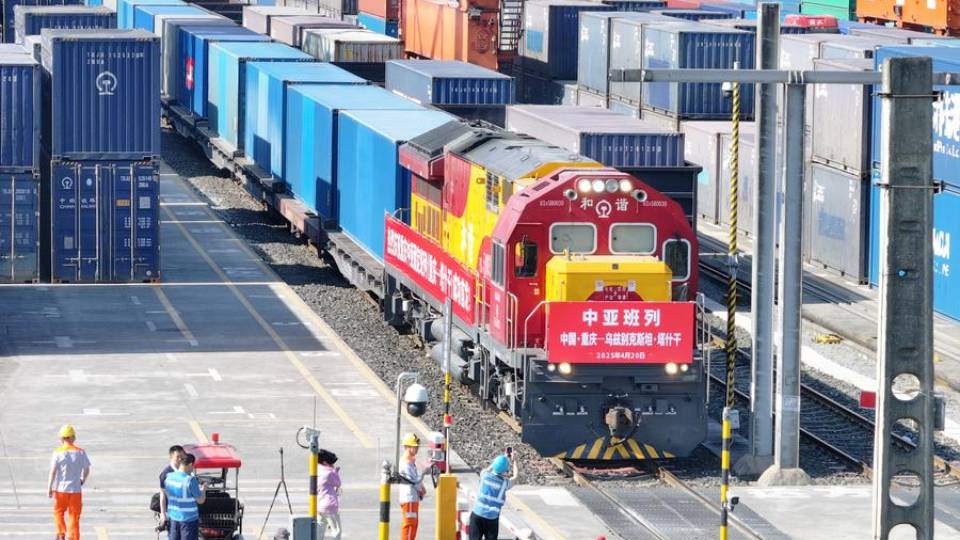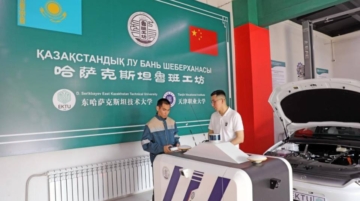
This is a free preview of the upcoming Critical Minerals Weekly Digest, part of the new CGSP Intelligence service launching in 2026.
China’s engagement with Central Asia is shifting toward a more comprehensive economic integration model that combines traditional infrastructure development with advanced technology deployment and diversified manufacturing strategies. This week’s developments reveal how Chinese companies are simultaneously establishing digital infrastructure hubs, expanding hydropower capacity, and creating multi-sector manufacturing facilities that serve both immediate market needs and long-term strategic positioning.
Rather than focusing solely on large-scale infrastructure projects, Chinese investment is now creating integrated economic ecosystems that touch various aspects of daily life and national development priorities. This approach allows China to embed its technology standards, business practices, and supply chains deep into Central Asian economies while providing host countries with immediate benefits in job creation, technology transfer, and infrastructure development.
This week in China-Central Asia Cooperation:
Chinese Investor Launches $28 Million Multi-Sector Manufacturing Hub in Uzbekistan’s Samarkand Region
Chinese investor Yaxing Guoji Maoyi is moving forward with a diverse $28 million manufacturing project in Uzbekistan’s Samarkand region, specifically in the Akdarya district. The initiative is notable for its varied production scope, which includes electric scooters (two-, three-, and four-wheeled), solar-powered streetlights, beverages, and laundry detergent, signaling a multi-faceted entry into the Uzbek market. The first phase, valued at $16.5 million, is slated to begin operations in February 2026 and is projected to create approximately 40 new jobs.
Why This Matters: For Uzbekistan, this $28 million project represents a practical step towards industrial diversification and import substitution. By manufacturing electric scooters and solar streetlights locally, the country supports its urban modernization and green mobility goals while reducing reliance on imported consumer goods. The inclusion of everyday products like beverages and detergent addresses immediate domestic market needs, creating jobs and building a more self-sufficient industrial base in the Samarkand region.
For China, this venture is a low-risk, high-insight strategy for market penetration. A medium-sized investor like Yaxing Guoji Maoyi is testing multiple product lines—from green tech (e-scooters, solar lights) to fast-moving consumer goods—to identify the most profitable niches in the Uzbek market. This “portfolio approach” to manufacturing allows China to embed its medium-tech goods and production standards across diverse sectors of the Uzbek economy, laying the groundwork for larger-scale industrial investments in the future and solidifying its role as Uzbekistan’s all-purpose commercial partner.
Kazakhstan Becomes Central Asia’s Digital Hub as China Mobile International Selects Akashi Data Center
Kazakhstan has secured its place on the global map of China Mobile International (CMI), with the country’s Akashi Data Center chosen as a strategic platform for developing digital infrastructure in Central Asia. CMI plans to leverage Akashi’s Tier IV capacity (100 megawatts) as a crucial backbone for servicing AI systems used by both communication operators and government agencies. The two parties discussed potential contracts, investments in the AST-2 module, and the launch of a joint cloud solution.
Why This Matters: For Kazakhstan, this partnership with CMI elevates its Akashi Data Center to a regional digital hub, directly servicing the high-performance computing needs of AI systems for both government and telecom operators. This provides a sovereign, state-of-the-art infrastructure that can attract further international tech investment and prevent sensitive data from being processed abroad. By integrating into CMI’s global network, Kazakhstan positions itself as the critical digital gateway for Central Asia, a move that promises significant economic and geopolitical dividends.
For China, securing this partnership is a masterstroke in its digital ecosystem strategy. CMI gains a powerful, centralized platform to capture the region’s growing AI and cloud market, routing data through Chinese-managed infrastructure. This not only creates a lucrative commercial foothold but also provides strategic depth, allowing China to bypass potential Western-controlled internet chokepoints. By making Kazakh AI systems and government services dependent on this joint infrastructure, China embeds itself at the core of the country’s—and by extension, the region’s—digital future, complementing its existing investments in payments (UnionPay) and industrial automation.
Sinohydro Secures Contract for Kambarata HPP-2 Second Unit in Kyrgyzstan
The Chinese state-owned company, Sinohydro Bureau 16 — Sinohydro Joint Venture (China), a major subsidiary of PowerChina, has won the tender for the construction of the second hydropower unit at the Kambarata HPP-2 in Kyrgyzstan. Sinohydro was declared the winner due to offering the most favorable terms and demonstrating a high technical level for the project. The company specializes globally in the design, construction, and operation of hydropower plants, dams, and large infrastructure projects.
Why This Matters: For Kyrgyzstan, the construction of Kambarata HPP-2 by a proven, state-owned Chinese contractor is a decisive step toward achieving energy independence and regional energy exporter status. This major hydropower unit will significantly increase domestic electricity generation, reducing chronic power shortages and allowing for the export of surplus power to neighboring countries like Uzbekistan and Kazakhstan. The project represents a critical national infrastructure achievement that has been discussed for decades, finally unlocking a key domestic resource for economic growth.
For China, this project, executed by the PowerChina subsidiary Sinohydro, is a classic example of strategic infrastructure lock-in. By building a nation’s most critical energy assets, China embeds its technology and standards at the foundation of the economy. This creates a long-term dependency for maintenance, spare parts, and potential future expansion, ensuring Chinese influence for the lifespan of the plant.
Furthermore, it solidifies China’s role as the primary infrastructure partner in Central Asia, complementing its digital and transport projects, and secures geopolitical goodwill by delivering a project vital to Kyrgyzstan’s national security and economic development.
In Context
This week’s developments demonstrate China’s sophisticated multi-vector approach to Central Asian engagement, simultaneously targeting critical infrastructure, digital backbone, and manufacturing diversification. The combination of digital infrastructure in Kazakhstan, diversified manufacturing in Uzbekistan, and energy infrastructure in Kyrgyzstan creates a complementary regional network that strengthens China’s economic influence across different national priorities and development needs.
The takeaway: China is implementing a comprehensive regional strategy that creates multiple layers of economic integration through simultaneous investments in digital infrastructure, energy systems, and diversified manufacturing. This approach moves beyond single-sector dominance to establish interconnected dependencies that span critical national infrastructure, emerging technology platforms, and everyday consumer markets.
For Central Asian states, this offers immediate benefits through job creation, technology access, and infrastructure development, but creates complex webs of dependency that extend across multiple economic sectors. The key challenge is leveraging these diverse Chinese investments to build complementary national capabilities while maintaining strategic autonomy and preventing over-reliance on single-source suppliers and technology standards.
Yunis Sharifli is CGSP’s Non-Resident Fellow for Central Asia.






